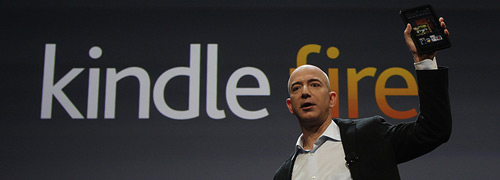
Tricia Duryee interviews Amazon CEO Jeff Bezos over at All Things D and Jeff shares Amazon’s unique perspective on pricing:
We do not like the razor and razor blade model, where you lose money up front and then somehow make it up on the backend. We also do not like the other model, where you make a lot of money on the device, because it doesn’t follow our approach.
If you make a lot of money on the device, I believe you haven’t earned your money on it yet, and then you’ve incentivized them (the customers) to stay on the upgrade treadmill that I mentioned today.
This point about earning money on the device is quite interesting. It suggests to me that he’s trying to focus the Amazon team on providing ongoing value to consumers by intentionally leaving money on the table at the time of the initial purchase — we’re not making our margins up front, so we need to be sure we understand how to provide a long lasting product and the value we can deliver to customers over time to keep them using this device.
Apple, of course, doesn’t do this. They make sure to capture their ~30% margin up front. And yet Apple continues to deliver ongoing value (new apps, new content, and software product updates for older devices).
Given the complexity of Apple’s devices over Amazon’s, the trouble here is your iPhone or iPad often starts to feel sluggish as the years, apps, and software updates roll on. As a result you’re incentivized to upgrade for speed and perhaps one or two other major features (retina screen, better camera, etc).
But I bet Kindle 1 users are still pretty happy with their Kindle. The screen is still great for reading books. All the content available on the latest Kindle is still available to you. The built-in light on your case isn’t that much of an inconvenience over the just announced built-in Kindle light. Why upgrade?
It’s fair to say Apple is unique in the industry in the long term value they provide their customers. Most electronics manufacturers sell and move on, Apple doesn’t.
It’s also fair to say Amazon has been in a unique position having created a focused device that, by its nature, obviates consumer desire to upgrade.
So it will be interesting to see if this philosophy of disincentivising hardware upgrades in order to focus on providing long term value to customers will work with the additional complexity of the Kindle Fire (Android OS, more apps than just books, more media formats, more of a reliance on screen resolution, more interactions that need to feel responsive to your touch). Will software updates be enough to keep Amazon customers using their Fire? Or will they get on a 1 to 2 year upgrade cycle, despite Amazon’s efforts to keep them focused on content, not hardware.
Photo by Victor Blue for Wired.